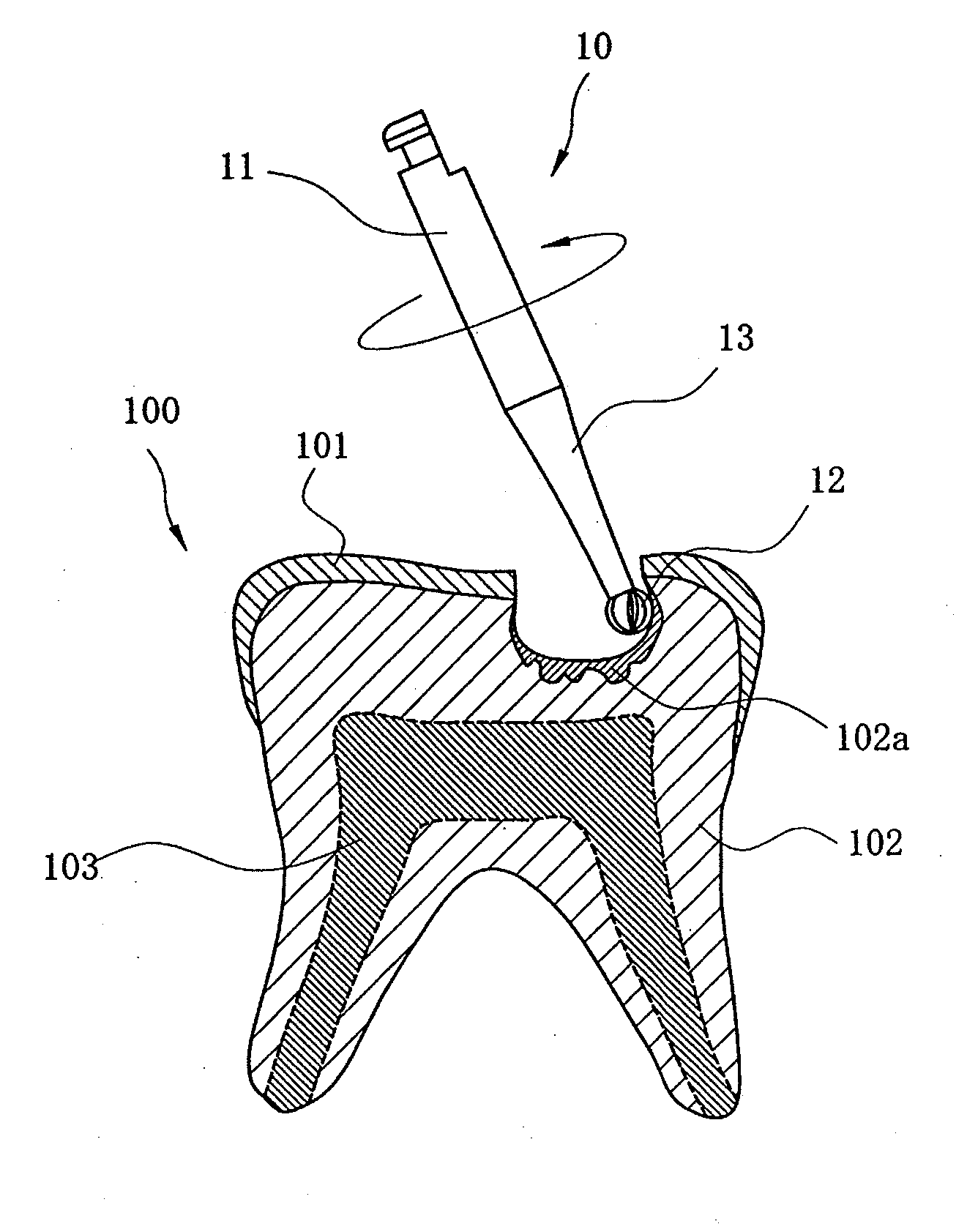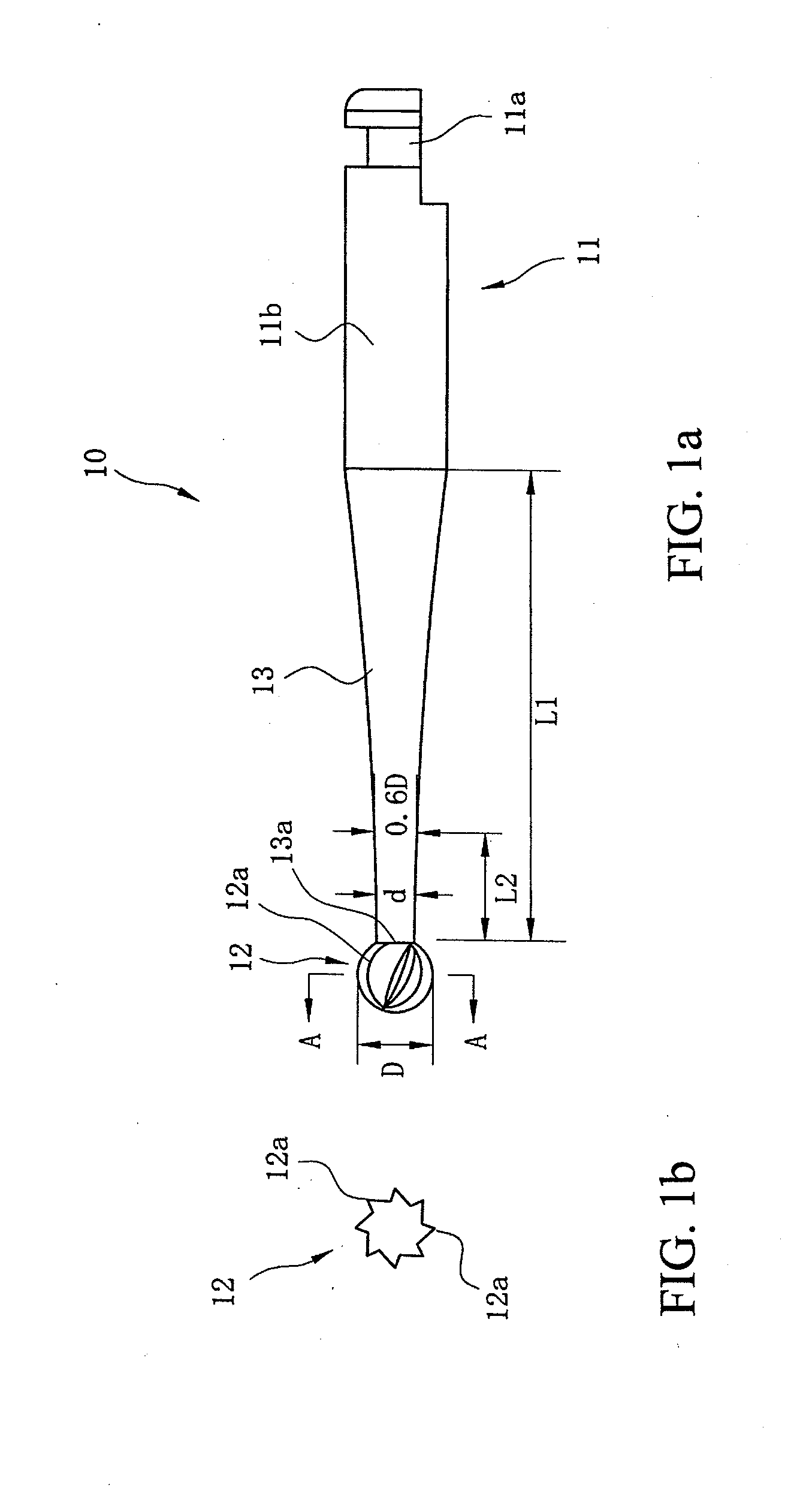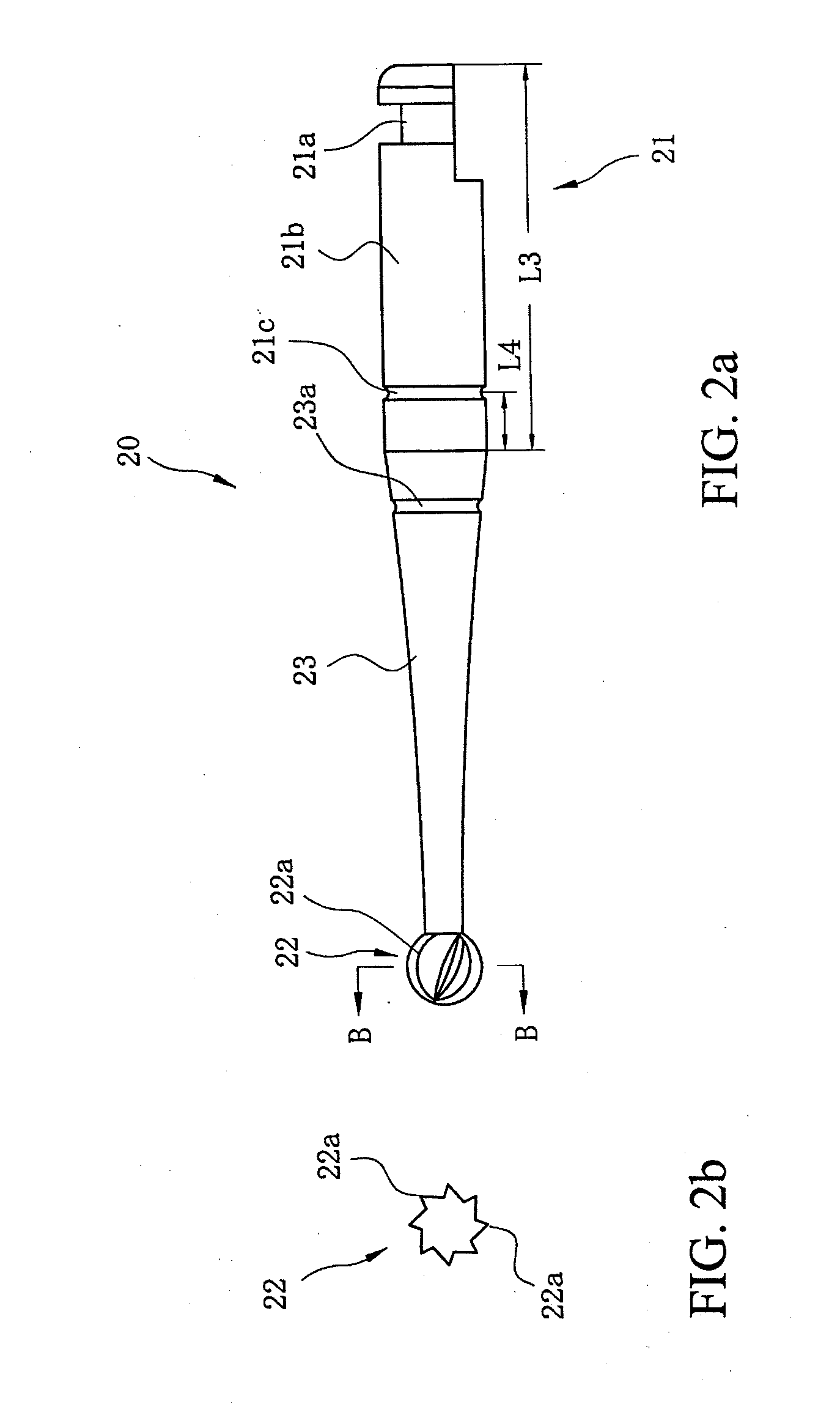Stainless steel bur
a technology of steel bur and steel plate, which is applied in the field of steel plate bur, can solve the problems of increasing tooth damage, deep into the healthy dentin, and increasing tooth damage, and achieves the effects of reducing cutting force, reducing tooth damage, and low hardness
- Summary
- Abstract
- Description
- Claims
- Application Information
AI Technical Summary
Benefits of technology
Problems solved by technology
Method used
Image
Examples
first embodiment
[0037]FIG. 1 is a diagram of a stainless steel bur according to the present invention, where (a) is a front view and (b) is a cross section cut along the line A-A of (a). Compared to the conventional example, the tapered portion is slightly different but it is otherwise the same.
[0038]The stainless steel bur according to the present invention is made of austenitic stainless steel. An austenitic stainless steel wire rod is subjected to a cold wiredrawing process one or more times into a desired thickness. In an austenitic stainless steel composition, improvement in flexural strength and exhibition of uniform strength without any fluctuation across the entire length is possible by pulling crystal grains in the axial direction into fibers through wire drawing. Such material has a concentric hardness distribution. In other words, hardness near the surface is highest, and gradually decreases toward the center. While there is a reduction of area according to which it becomes hardest throu...
second embodiment
[0045]FIG. 2 is a diagram of the stainless steel bur according to the present invention, where (a) is a front view and (b) is a cross section cut along the line B-B of (a). Aside from having a short diameter section 23a, it is otherwise externally the same as that in the conventional example.
[0046]While an intermediate section 23 of the second embodiment is tapered, a short diameter section 23a is formed near the connecting part with a handle 21 or thickest section, and a short diameter section 21c is formed in the handle 21. The position of the short diameter section 21c formed in the handle 21 is within a range established by the relationship L43 / 3 where L3 denotes length of the handle 21 and L4 denotes length from the intermediate section 23 side end of the handle 21 to the short diameter section 21c. In other words, the short diameter section 21c is provided at one-third of the length of the handle 21 on the intermediate section 23 side. In the embodiment of FIG. 2, while both o...
fourth embodiment
[0058]FIG. 7 is a diagram showing a state of cutting healthy dentin 102 with the stainless steel bur 10 according to the If the working section 12 reaches healthy dentin 102, speed of digging down becomes slow with the rounded cutting blades 12a″ and 12a′ of the working section 12 since the healthy dentin 102, which has a hardness of more than 50 Hy, is harder than the dental caries 102a. However, even if the dental caries 102a has irregularities, it is possible to cut the dentin 102 portion, and thus the dental caries 102a may be completely removed as shown in FIG. 7.
[0059]If the dental caries 102a has spread across a larger region than the hole of the enamel 101 as shown in FIG. 4, the hole first opened using the dental bur will be too small. In such case, it is troublesome to change the cutting tool back to the dental bur and cut. Since the cutting blades 12a of the stainless steel bur 10 according to the present invention are not blunt from the widest position of the working se...
PUM
 Login to View More
Login to View More Abstract
Description
Claims
Application Information
 Login to View More
Login to View More - R&D
- Intellectual Property
- Life Sciences
- Materials
- Tech Scout
- Unparalleled Data Quality
- Higher Quality Content
- 60% Fewer Hallucinations
Browse by: Latest US Patents, China's latest patents, Technical Efficacy Thesaurus, Application Domain, Technology Topic, Popular Technical Reports.
© 2025 PatSnap. All rights reserved.Legal|Privacy policy|Modern Slavery Act Transparency Statement|Sitemap|About US| Contact US: help@patsnap.com



